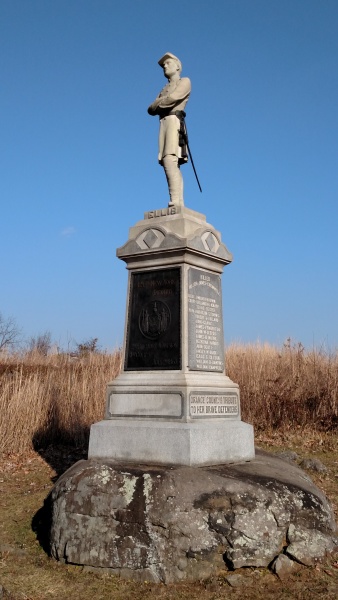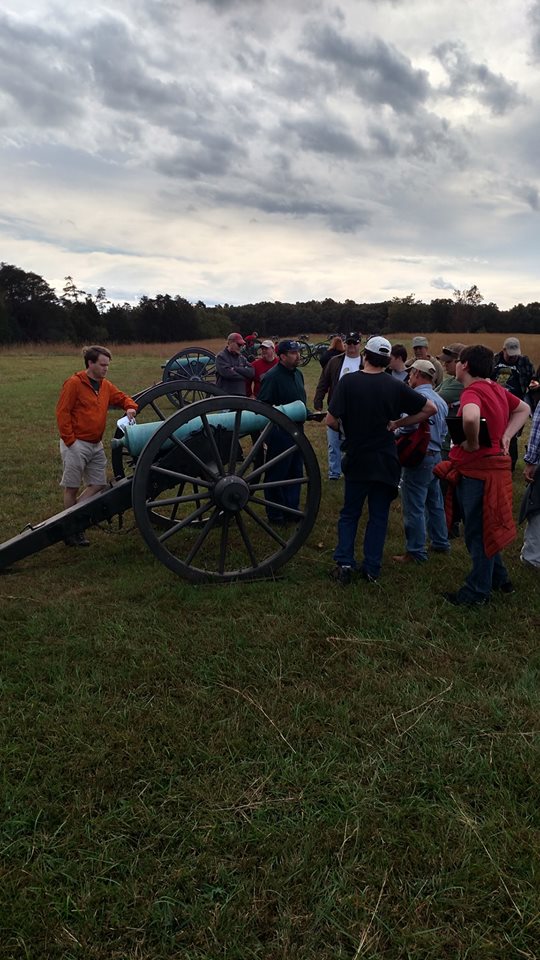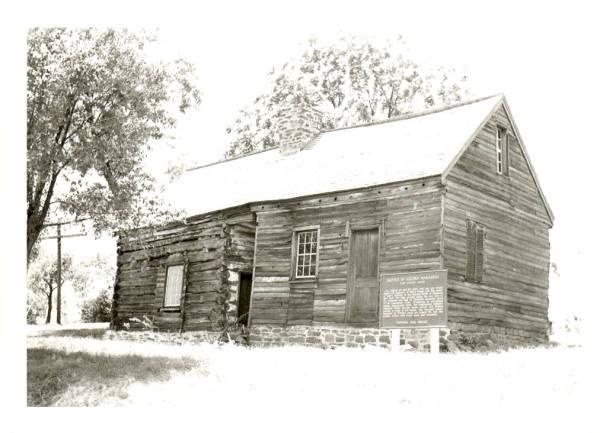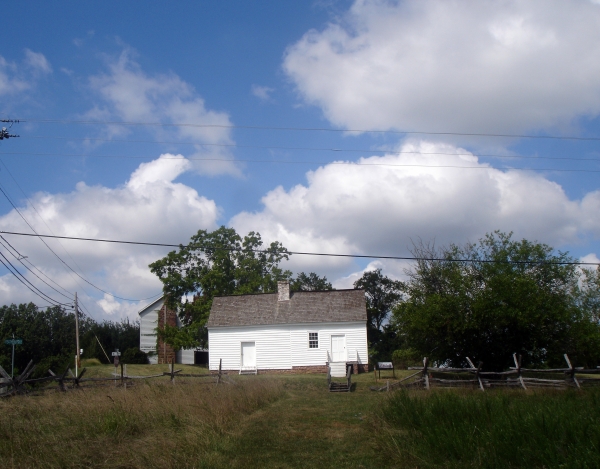
BR: Can you tell us a little bit about yourself?
BB: We might touch upon this more later, but for most of my life I had an interest in American military history – mostly in World War II and the Civil War. Realizing this, I entered college at the University of Delaware as a History major, though at age 19 I had no idea what exactly I would do for a career. Fairly quickly, I decided to double major in Anthropology, which is typically what you study in the United States if you are interested in archeology. I also added a minor in American Material Cultural Studies. I graduated in 2001 and went straight to grad school at the University of Maryland, earning my Masters in Applied Anthropology (with a concentration in Historical Archaeology) in 2003.
While at UMD, I got my first real taste of the National Park Service, and spent 2 ½ years as an archeologist at Monocacy National Battlefield. That is where I did my Master’s project (we didn’t call it a thesis), which was to identify and prepare a National Register of Historic Places nomination for the archeological remains of the encampment of the 14th New Jersey. But my work at Monocacy also exposed me to other time periods as well, because the archeological history at Civil War parks goes back long before the battles were fought.
By the end of grad school, I knew pretty well that I wanted to work for the NPS – I really identified with the mission, and the efforts the NPS makes to tell diverse stories. I was incredibly fortunate in that – just a half year after getting my Masters – I was able to find a permanent position as a Cultural Resource Specialist at the George Washington Memorial Parkway. I held that position until 2010, when I made the difficult decision to not get my hands dirty as often, and transition into park management. I served a brief stint as the Site Manager of Great Falls Park, and then spent four years as the Site Manager of Arlington House, the Robert E. Lee Memorial. While there, I was fortunate enough to work with the Director of the National Park Service to secure a $12.35M donation from philanthropist David Rubenstein for the rehabilitation of the entire site.
At about that time, I began to dabble in legislative affairs, and so I moved over to the NPS regional office in D.C., where I split my time handling congressional affairs for all of the parks in the National Capital Region, while also still helping to manage the extensive planning of the Arlington House project. After three years in that office, I became the Superintendent here at Manassas in March 2017.
BR: How did you get interested in history in general, and in the Civil War in particular?
BB: I’d say I have always been drawn to history – particularly to military history. Both my grandfathers were veterans of WWII, and one of them went through some pretty bad stuff with the 1st Marine Division. I was always craving for him to share his experiences (which he eventually began to do prior to passing away in 2011). So as a kid I was always fascinated by WWII and, to a lesser extent, the Civil War. I do think that the Ken Burns series – which came out when I was eleven – made an impression on me, and by the time I got to high school I was reading a good bit about both conflicts. But unlike WWII, I could actually visit Civil War battlefields, which I began to do while in Boy Scouts.
Towards the end of high school, I started going to Civil War reenactments, and I became more and more interested in the material culture of the Civil War and in the common soldier. In my freshman year of college, I took a course on the archeology of American battlefields, taught by Dr. David Orr. I was hooked. Dave was an archeologist with the National Park Service out of Philadelphia, and at the time was largely focused on the Civil War. I think that class is what refocused me, and I realized if I could be one thing, I wanted to be Civil War archeologist.
BR: Since you’ve had a little time to settle in, what do you see as the challenges facing MNBP at this time?
BB: I’d say the park is facing three major challenges: impacts from adjacent development, severe traffic congestion, and maintaining/restoring the historic landscape.
The surroundings of the park have changed drastically over the last 30 years. While the park was once surrounded by farms, it is now bounded by development or planned future developments. 15% of the lands inside the congressionally-authorized boundary of the park are not federally owned. As I type this, there are multiple housing developments being planned or constructed on private lands within the boundary of the park. That will make it very, very hard to ever acquire and preserve those lands. But it’s not just housing developments – we’re working with the Virginia Department of Transportation on minimizing the impacts of a massive expansion of I-66, which runs along the southern boundary of the park. The proposed project will almost double the size of the road, and may include lengthy flyover ramps that are visible from within the park. And of course, there are frequent proposals for new cell phone towers and power lines that have the potential to create visual impacts.
With development comes traffic. On weekdays, it is exceptionally difficult to move around the park except for in the middle of the day. Even then, hundreds of large trucks pass through the park daily, and the car traffic is still intense. This makes it challenging for visitors to experience the different parts of the park or to drive the audio tour. It doesn’t matter what we do to restore the landscape; with the constant buzzing of traffic through the park, visiting Manassas can be a very different experience than standing in the heart of, say, Antietam or Shiloh. The Department of the Interior is legislatively mandated to explore ways to divert traffic around the park, and if deemed to be in the interest of protecting the integrity of the park, construct new highways and close the major thoroughfares that bisect the park. Although planning for this did come close to reality a few years ago, rerouting the existing roads is a divisive proposal that is dependent upon considerable political and financial support to be put back on the table.
Finally, restoration of the Civil War-era landscape is a huge priority of mine, but it is also a significant challenge. Many areas of the park that are now heavily wooded were historically open fields, but (for good reason) we can’t just go in one day and remove hundreds of trees. Besides needing to go through a considerable environmental and public review process, we also need a plan on how to maintain these areas once they are cleared. A classic example is the ~130 acres adjacent to the Deep Cut that were cleared about ten years ago; between the stumps that were left behind and the rocky terrain, it has been very difficult to maintain this area using traditional mowing methods, and thus portions have grown back up considerably.
BR: On the flipside, what do you see as the opportunities for the park, in the way of programs and projects?
BB: Well, speaking of landscape restoration, we are hoping to try some new things to keep some of these open spaces cleared, including the use of controlled burns. While using fire could alarm some people, it is a widely-accepted management tool throughout the NPS, and with proper outreach to the public, I think will ultimately help us significantly. It is also a great way to clear out nasty non-native invasive species, and ultimately supports the establishment of habitat for native birds like quail.
We also have a quickly-growing friends group, the Manassas Battlefield Trust. They have a lot of energy, and I think in the next few years we are going to see some great things from then, ranging from the rehabilitation of historic structures to new educational opportunities.
Finally, I really think we have an opportunity to reach new audiences. We cannot and should not depend upon Civil War buffs like you and I to be the sole supporters of this park. We have something for everyone, whether they want to come here to bird watch, to exercise, or just to enjoy 5,000 acres of open space. Now is the time to try to reach new user groups, forge them into advocates for the park, and share some significant Civil War stories at the same time.
BR: Bull Runnings had a very successful (IMO) outing at the park in April 2016. We had over 60 folks tour the field from top to bottom, so to speak, on what started out as a rainy Saturday. Hopefully, we can arrange another such tour in the future. Many visitors to the park tend to spend their time on the Henry Hill loop, so far as First Bull Run is concerned. Are there any plans to raise the profile of the first battle on other areas of the field?
BB: As I mentioned above, I am keenly interested in continuing to restore the landscape here, and that certainly includes looking at some of the key views related to the first battle. But it’s going to be a process and not happen overnight. Your readers may be interested in learning that, beginning in mid-October, we will begin a million dollar project to rehabilitate the Stone Bridge. This will include stabilizing some of the structural elements, replacing missing stones and repointing the whole bridge, and laying down new textured and colored pavement (called a chip seal) on the bridge road surface. If all goes according to schedule, the bridge should look great by the end of the year.
—————————————————————————
After completion of this interview, there was an incident of vandalism at Manassas National Battlefield Park. The Superintendent had this to say regarding that incident:
 BB: Obviously, the current debate over Confederate symbols and remembrance is something that has hit close to home recently at Manassas. On the morning of October 4th, park staff discovered that the monument to Stonewall Jackson had been vandalized. While far from the first Confederate monument to be vandalized over the last few months, to my knowledge, this was the first to be struck that was within the context of a national park or battlefield. If there is any place where monuments to the Confederacy are appropriate, it should be at the places where the fighting took place. After all, it takes two sides (at least) to tell the story of a battlefield; otherwise, it’s just a field. And, in terms of monuments being placed in their appropriate context, you really can’t get more context for a Jackson monument than it standing at the very spot where he got the name “Stonewall.”
BB: Obviously, the current debate over Confederate symbols and remembrance is something that has hit close to home recently at Manassas. On the morning of October 4th, park staff discovered that the monument to Stonewall Jackson had been vandalized. While far from the first Confederate monument to be vandalized over the last few months, to my knowledge, this was the first to be struck that was within the context of a national park or battlefield. If there is any place where monuments to the Confederacy are appropriate, it should be at the places where the fighting took place. After all, it takes two sides (at least) to tell the story of a battlefield; otherwise, it’s just a field. And, in terms of monuments being placed in their appropriate context, you really can’t get more context for a Jackson monument than it standing at the very spot where he got the name “Stonewall.”
I’d say that my reaction – and that of most of the staff – is disappointment. Our National Parks should be places for dialogue, not destruction. It’s healthy to have a debate over the causes of the Civil War, and over how we remember those who fought. But in national parks, we tell all the stories, from the combatants to the civilians to the enslaved, all of whom left their marks on these fields, and all of whom are worthy of being remembered.
















![Groveton-1906[4546]](https://bullrunnings.files.wordpress.com/2017/11/groveton-19064546.jpg?w=600)
![Dogan House 1906[4545]](https://bullrunnings.files.wordpress.com/2017/11/dogan-house-19064545.jpg?w=600)

 BB: Obviously, the current debate over Confederate symbols and remembrance is something that has hit close to home recently at Manassas. On the morning of October 4th, park staff discovered that the monument to Stonewall Jackson had been vandalized. While far from the first Confederate monument to be vandalized over the last few months, to my knowledge, this was the first to be struck that was within the context of a national park or battlefield. If there is any place where monuments to the Confederacy are appropriate, it should be at the places where the fighting took place. After all, it takes two sides (at least) to tell the story of a battlefield; otherwise, it’s just a field. And, in terms of monuments being placed in their appropriate context, you really can’t get more context for a Jackson monument than it standing at the very spot where he got the name “Stonewall.”
BB: Obviously, the current debate over Confederate symbols and remembrance is something that has hit close to home recently at Manassas. On the morning of October 4th, park staff discovered that the monument to Stonewall Jackson had been vandalized. While far from the first Confederate monument to be vandalized over the last few months, to my knowledge, this was the first to be struck that was within the context of a national park or battlefield. If there is any place where monuments to the Confederacy are appropriate, it should be at the places where the fighting took place. After all, it takes two sides (at least) to tell the story of a battlefield; otherwise, it’s just a field. And, in terms of monuments being placed in their appropriate context, you really can’t get more context for a Jackson monument than it standing at the very spot where he got the name “Stonewall.”
Recent Comments